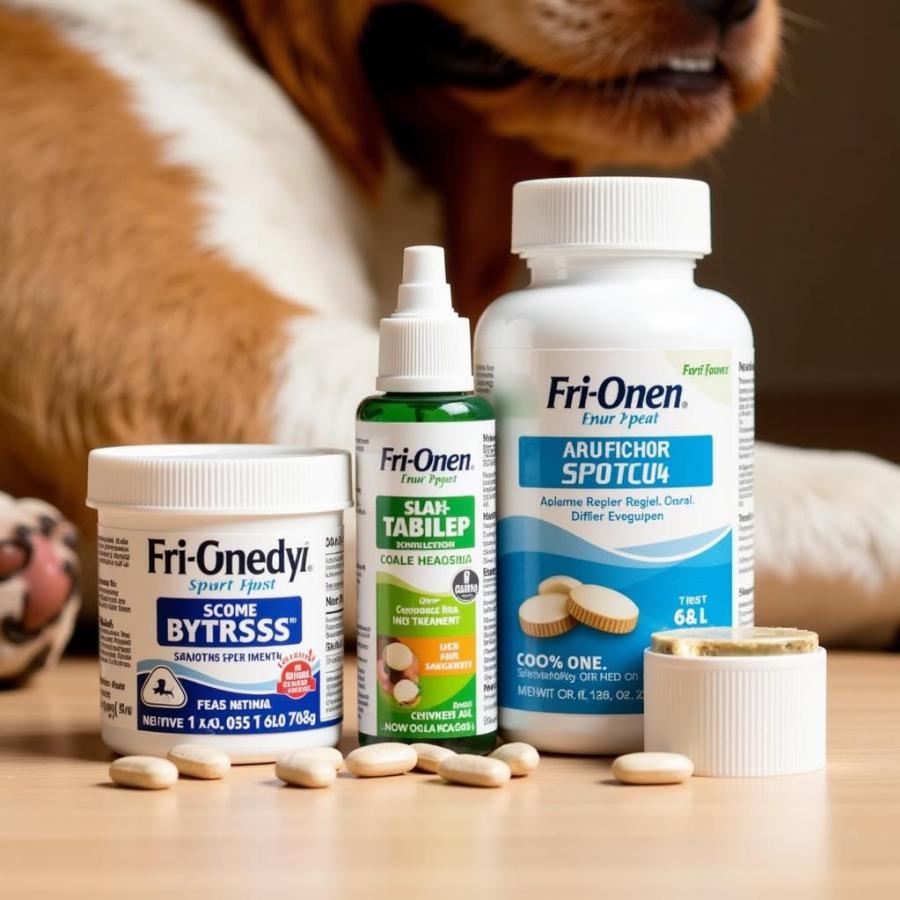Flea and tick infestations can be a real nuisance for your furry friend, causing itching, irritation, and even transmitting diseases. Finding effective flea and tick chewables for dogs without a vet prescription can be a convenient solution, but it’s crucial to understand the options available, their effectiveness, and potential risks. This comprehensive guide will delve into everything you need to know about over-the-counter flea and tick chewables, helping you make the best choice for your canine companion.
Understanding Over-the-Counter Flea and Tick Chewables
Choosing the right flea and tick preventative for your dog can feel overwhelming with so many options on the market. When looking for flea and tick chewables for dogs without a vet prescription, it’s essential to consider your dog’s breed, size, age, and overall health. Some common active ingredients in these chewables include afoxolaner, fluralaner, and sarolaner, each with varying effectiveness against different types of parasites.
Choosing the Right Chewable for Your Dog
Navigating the world of flea and tick prevention can be tricky. What works for one dog might not work for another. How do you choose the right flea and tick chewables for dogs without a vet prescription for your dog? Key factors to consider include the specific parasites prevalent in your area, your dog’s lifestyle (e.g., indoor vs. outdoor), and any sensitivities or allergies they might have.
 Types of flea and tick medications for dogs
Types of flea and tick medications for dogs
Are Over-the-Counter Options as Effective?
Many pet owners wonder if over-the-counter flea and tick chewables for dogs without a vet prescription are as effective as prescription medications. While over-the-counter options can be effective in controlling flea and tick infestations, it’s important to note that they may not be as potent as prescription-strength treatments. Consulting with your veterinarian is always recommended, especially if your dog has pre-existing health conditions or is already experiencing a severe infestation.
Potential Risks and Side Effects
While generally safe, flea and tick chewables for dogs without a vet prescription can sometimes cause side effects. These can range from mild gastrointestinal upset to more serious neurological issues in rare cases. Always read the product label carefully and follow the dosage instructions precisely.
Tips for Preventing Flea and Tick Infestations
Besides using chewables, several preventative measures can help keep your dog flea and tick-free. Regular grooming, checking for ticks after outdoor adventures, and maintaining a clean environment in your home and yard can significantly reduce the risk of infestations.
Conclusion
Finding the right flea and tick chewables for dogs without a vet prescription requires careful consideration of your dog’s individual needs and the specific parasite risks in your area. While over-the-counter options offer convenience, consulting your veterinarian is always recommended for personalized guidance and to address any potential health concerns. By staying informed and proactive, you can help your furry friend enjoy a happy, healthy, and parasite-free life.
FAQ
- How often should I give my dog flea and tick chewables? This depends on the specific product. Always follow the instructions on the label.
- Can I use over-the-counter chewables on puppies? Some chewables are formulated for puppies. Check the product label or consult your vet.
- What should I do if my dog experiences side effects? Discontinue use immediately and contact your veterinarian.
- Are there natural alternatives to flea and tick chewables? Yes, some natural remedies exist, but their effectiveness varies. Discuss these with your vet.
- Can I use chewables alongside other flea and tick preventatives? Not always. Combining treatments can be harmful. Consult your vet first.
- How do I know if my dog has fleas or ticks? Common signs include excessive scratching, biting, and redness of the skin. You may also see the parasites themselves.
- What diseases can fleas and ticks transmit to dogs? Lyme disease, ehrlichiosis, and anaplasmosis are just a few examples.
Beaut Dogs is your go-to resource for all things related to dog care. We provide expert advice, helpful tips, and comprehensive information to help you navigate the wonderful world of dog ownership. For personalized assistance and answers to your specific questions, please contact us at Email: [email protected]. Beaut Dogs is committed to helping you and your canine companion live a happy and healthy life together.